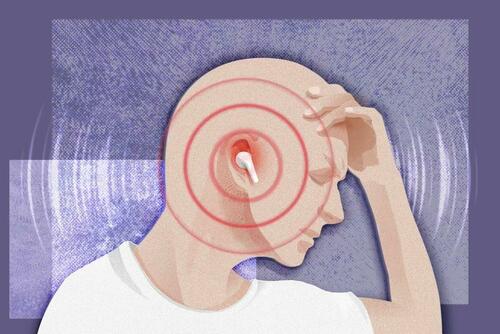Long-Wear, Noise-Canceling, And Wireless: How Earphones Damage Our Hearing
Authored by Marina Zhang via The Epoch Times (emphasis ours),
On Nov. 24, 2019, a new thread titled “AirPods causing tinnitus?” appeared on the Apple community forum page.
The Apple user said that after using AirPods for a while, he noticed a high-pitched ringing in his ears that didn’t go away.
According to him, he has always been highly protective of his hearing; he doesn’t listen to anything loud and always carries earplugs in case he encounters anything that could damage his hearing. But things only got worse.
“Having said all that, now I notice that when I put my AirPods in my ears and have nothing playing, they emit a high pitched tone that I would say exactly replicates the tone of my tinnitus, leaving to me believe that the AirPods actually caused my tinnitus,” the user wrote.
Since the thread was published in 2019, over 3,200 Apple users have responded with “Me too.”
The introduction of Apple wireless earphones has had a noticeable effect on earphone use, with younger generations using them more than older generations, said Julie Prutsman, an audiologist and founder of the Sound Relief Hearing Center. For the past few years, she has seen an increasing number of younger people show up to her clinics with hearing loss and tinnitus.
AirPods and other Apple earphones make up the majority of earphones used by teenagers today. In 2021, Apple earphones were ranked first in the American headphone and earphone market. A 2022 survey by Piper Sandler surveyed more than 7,000 teenagers and found that 72 percent owned AirPods.
The audiologist told The Epoch Times that the root problem lies not with what earphones people use but with a common phenomenon: irresponsible earphone use. The convenient wireless and noise-canceling features, along with better sound quality, have further exacerbated people’s overuse.
“It is becoming a real issue,” Ms. Prutsman said, “and unfortunately, they’re not educated about what can happen.”
High ‘Dose’ and Prolonged Use
The American Osteopathic Association estimates that 20 percent of teenagers today will experience hearing loss, partially due to their headphone and earphone use. A review published in the International Journal of Audiology found that about 6 percent to 60 percent of earphone users show symptoms of hearing loss, including hearing difficulties and tinnitus.
At the same time, more and more youths are regularly using earphones. In February, a University of Michigan poll surveyed parents of 5-to-12-year-olds and found that two-thirds reported that their children use headphones and earphones.
Most people know that loud sounds can damage the ears. However, Dr. Clarice Saba, a Brazilian otorhinolaryngologist, said listening at low volume for extended periods can also induce damage.
People put on their earphones at work, at home, and even during sleep. Even if the sounds may not always be loud, having earphones in for hours can still overwork the ears, Dr. Saba said.
The cochlea is located inside our ears. It sits behind the ear drum and is responsible for turning sound waves into electrical signals that are then transmitted to the brain. Prolonged use of earphones stresses and damages cochlea cells. If some of them die, hearing loss can occur.
Ms. Prutsman added that noise-induced damage is “dose-dependent” and cumulates. A 2021 study published in the journal Medicine found that among teenagers who use earphones for more than 80 minutes a day in a noisy environment, one in five suffer hearing loss. The risks are 4.7 times higher than they are for those who use earphones for shorter periods.
Depending on the severity of the damage, the person may experience reduced sound sensitivity, problems with discerning sound, tinnitus, and even hearing loss.
Constantly keeping earphones in the ear canals can also cause a congested and humid environment, which may be conducive to ear infections. They also create greater in-ear pressure compared to over-ear headsets.
In-ear earphones, especially, rub against the delicate skin inside our ears. “If you scratch the ear inadvertently while inserting the AirPods, there can be micro-breaks in the skin that can lead to infection,” otolaryngologist Dr. Michael Seidman told The Epoch Times.
Besides, some people may not routinely clean their earphones, and debris on them can increase the risk. The earpieces also block most of the canal from outside oxygen, disrupting the health of the ear microbiome.
“The skin in the ears needs to breathe,” Dr. Saba said, then compared them to hands. “If you use gloves all the time, you can have problems.”
Noise Cancellation
In recent years, more noise-canceling earphones and headphones have hit the market, lending people the much-needed privacy to shield their music from those around them.
However, noise cancellation comes with caveats.
Since these earphones silence environmental sounds, their prolonged use may lead to hyperacusis, a condition in which the brain’s tolerance for sound decreases so that even ambient environmental sounds, such as coughing or typing on the keyboard, can trigger a stressful response.
Read more here…
Tyler Durden
Wed, 05/22/2024 – 23:00


Recent Comments